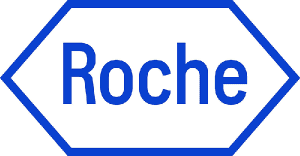Authoritative Perspectives on Governing and
Nurturing Regenerative Medicine
Two industry authorities discussed the Japanese framework for promoting the development of regenerative medicine and issues for that framework. The speakers were Daisaku Sato, councilor for Pharmaceutical Affairs in Japan’s Ministry of Health, Labor and Welfare, and Hideyuki Okano, president of the Japanese Society for Regenerative Medicine.
Optimizing the Review-and-Approval Process
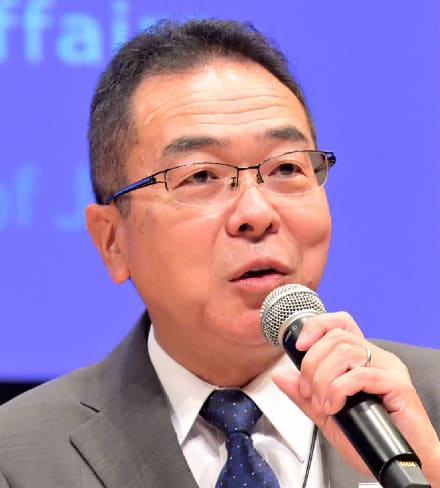
Daisaku Sato
Councilor for Pharmaceutical Affairs, Ministry of Health, Labor and Welfare
Sato began the exchange with an overview of the review-and-approval process for regenerative medical products. He showed in a slide how the 2014 revision of Japan’s Act on Pharmaceuticals and Medical Devices had occasioned a surge in the number of regenerative medicine product candidates in clinical trials. That revision had become necessary because the traditional approval process was unsuited to regenerative medicine and, as a result, required an inordinately long time for products in that sector.
The revision of the Act on Pharmaceuticals and Medical Devices (formally the Act on Securing Quality, Efficacy and Safety of Products Including Pharmaceuticals and Medical Devices) included the introduction of a fast-track authorization process. Under the revised act, the Ministry of Health, Labor, and Welfare can authorize an applicant to manufacture and market a regenerative medicine product once clinical trials have verified its safety. That authorization dispenses with the former requirement for large-scale, follow-up clinical trials to double-check candidates’ efficacy and safety. It is for a fixed term and is subject to expert opinion from the Pharmaceutical Affairs and Food Sanitation Council.
Japan’s fast-tracking for regenerative medicine products has also included shortening the review that follows the completion of Phase III clinical trials and precedes the start of marketing. The target review time was 12 months before the revision of the Act on Pharmaceuticals and Medical Devices. It is now nine months for “orphan” products, which are for treating serious but rare health problems, and six months for pioneering products.
A total of 19 regenerative medical products have won approval to market in Japan — 17 since the revision of the Act on Pharmaceuticals and Medical Devices. Cell therapy products account for 16 of the 19, and gene therapy products for three. Sato acknowledged that Japan’s fast-tracking for cell and gene therapies has received criticism for subjecting patients to treatments of dubious clinical value. He argued, however, that the value of making potentially valuable treatments available sooner rather than later justified the initiative. Fostering Japan’s domestic capacity for developing regenerative medical products was part of the motivation for deregulating the approval process, and Sato noted that products of domestic origin accounted for 11 of the 19 approvals in that sector.
Doing More than Just Writing Academic Papers

Hideyuki Okano
President, Japanese Society for Regenerative Medicine
Director, Keio University Regenerative Medicine Research Center
Chief Scientific Officer, K Pharma
Okano seconded Sato in regard to the value of Japan’s fast-tracking regenerative medical products. In addition to heading the Japanese Society for Regenerative Medicine, Okano is the director of the Keio University Regenerative Medicine Research Center and chief scientific officer at the Keio-based biotech venture K Pharma. He cited, meanwhile, three challenges that demand attention in pursuing further advances in regenerative medicine:
1. Fundamental progress in stem cell research and genomics
2. The application of genomic engineering technologies to tissue engineering
3. Research on fundamental technologies, such as mass cultivation techniques and cell separation equipment
“We need to do more,” emphasized Okano, “than just write academic papers about the products of our research. We also need to do more than achieve first-in-human clinical studies with a few subjects. We need to create mass production systems that allow for deploying our advances in hundreds of thousands or even millions of patients.”
Okano offered regenerative therapy as an example of a promising field for cultivating. Regenerative therapy is treatment for revitalizing cells, tissue, and organs that have become dysfunctional. It promises to address medical problems that are untreatable with conventional medicines. Okano cited the need for developing new vector systems for confirming the efficacy and safety of genetic technologies and then deploying those technologies in designer cells.
Fostering Entrepreneurship
Japan seemed to have stolen a march on the world in stem cell research in the mid-2010s. Stem cell researcher Shinya Yamanaka shared the 2012 Nobel Prize for Physiology or Medicine with U.K. developmental biologist John Gurdon for his work on iPS cells. The 2014 streamlining of the approval process invited hopes for a wave of product candidates based on Japanese iPS technology. Sato dismissed the concerns, however, of those who had expected faster progress.
“About 10 or 15 years go into development before something reaches the stage where the pace of approval becomes a factor. The iPS stuff that we’re hearing about now in regard to applications for approval has been in development for a decade. So I don’t think that we’re falling behind at our end, especially when you consider the new challenges posed by regenerative medical products in regard to manufacturing technology and clinical evaluation.”
Okano expressed less concern with the pace of approval for new generations of regenerative medical product candidates than with the developers’ capacity for commercializing the potential products. “I serve on the regenerative medicine subcommittee at the Health Sciences Council, and all the product candidates that we see there strike me as worthy of commercialization. A bigger concern is the lack of entrepreneurial spirit among the academic researchers behind a lot of the candidates. We need to forge a nationwide network among medical schools for fostering entrepreneurship.”

HOME
Investing in Japanese Regenerative Medicine
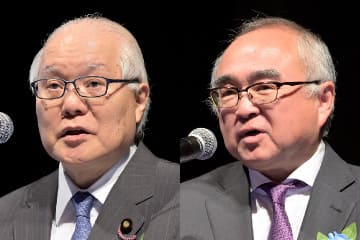
PAGE 1
Keynote Addresses
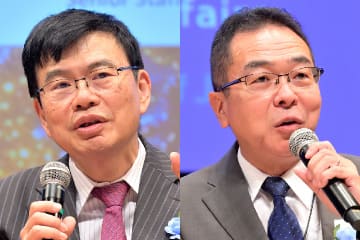
PAGE 2
Authoritative Perspectives on Governing and Nurturing Regenerative Medicine
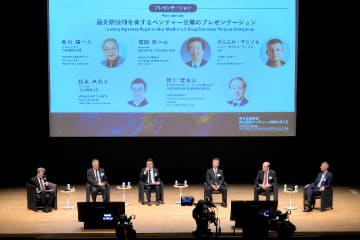
PAGE 3
Prominent Japanese Venture Companies in Regenerative Medicine and Drug Discovery
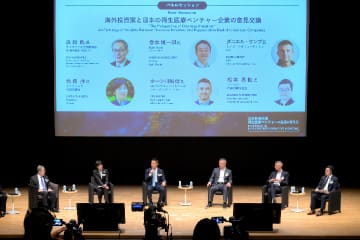
PAGE 4
Entrepreneurship and Venture Capital

PAGE 5
